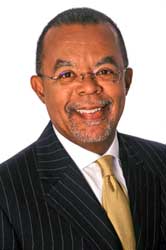Gates arrest: Part of Boston’s racism, then & now
By
Frank Neisser
Boston
Published Jul 29, 2009 3:16 PM
The July 16 arrest of Professor Henry Louis Gates Jr. in his own home in
Cambridge, Mass., is but the latest glaring incident in the long history of
racism permeating Boston, going back to the 1970s desegregation battles and
before.
From the end of Black Reconstruction following the Civil War until the 1970s,
there was never a single African American on either the Boston City Council or
Boston School Committee.
These all-white committees ran a segregated, separate and unequal school system
in Boston up through 1974, 20 years after the Supreme Court decision Brown v.
Topeka Board of Education declared segregation unconstitutional.
Black parents had to go to federal court to obtain an order in 1974 mandating
racial balance through busing to gain equal access to educational resources in
Boston. That same year Boston became famous worldwide as a focus of racism. A
right-wing white supremacist movement called “Restore our Alienated
Rights,” led and organized by Boston City Councilors like Louise Day
Hicks directly out of Boston City Hall, organized racist marches.
Buses carrying African-American children to schools in South Boston and other
white neighborhoods were stoned. A picture was flashed round the world of a
Haitian man being dragged off a porch in South Boston by a racist mob. Another
picture showed African-American attorney Theodore Landsmark suffering a broken
nose as he was assaulted with a U.S. flag by racists on Boston City Hall
Plaza.
In 1974 progressive forces mobilized from all over the country to answer the
racist forces. A 25,000-strong national march against racism took place in
Boston on Dec. 14. Busloads of antiracists came from all over the country,
including the Deep South. It was the largest civil rights demonstration to take
place since the 1963 March on Washington, where Dr. Martin Luther King Jr. made
his famous “I Have a Dream” speech. The 1974 march put a halt to
the racist mobilization, encouraging the people of Boston to come out against
racism.
In subsequent years, antiracist forces defended African-American homes from
racist attacks. African Americans, Latinas/os and Asians have gained
representation on the Boston City Council. But racists, championed by Mayor
Thomas M. Menino, have continued to try to return to “neighborhood”
unequal schools and eliminate school transportation.
After forming the Coalition for Equal Quality Education, community, labor and
progressive forces beat back the attack again this year. The school committee
was forced not to take action on a plan that would have drastically cut school
transportation and limited access of the Black and Latina/o communities to
quality educational opportunities. But the fight will continue in the fall, and
racist right-wing forces will only be emboldened by the attack on Professor
Gates and the right-wing chorus supporting this latest racist police conduct.
Articles copyright 1995-2012 Workers World.
Verbatim copying and distribution of this entire article is permitted in any medium without royalty provided this notice is preserved.
Workers World, 55 W. 17 St., NY, NY 10011
Email:
ww@workers.org
Subscribe
wwnews-subscribe@workersworld.net
Support independent news
DONATE


